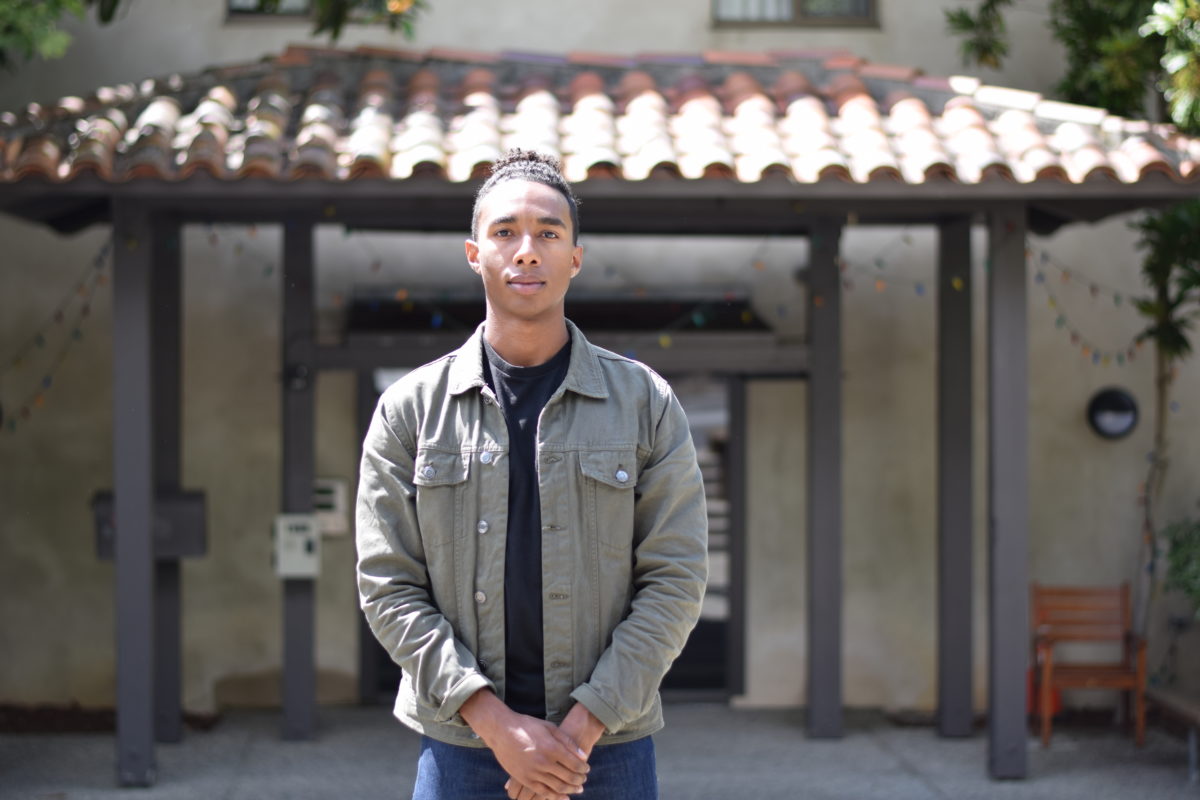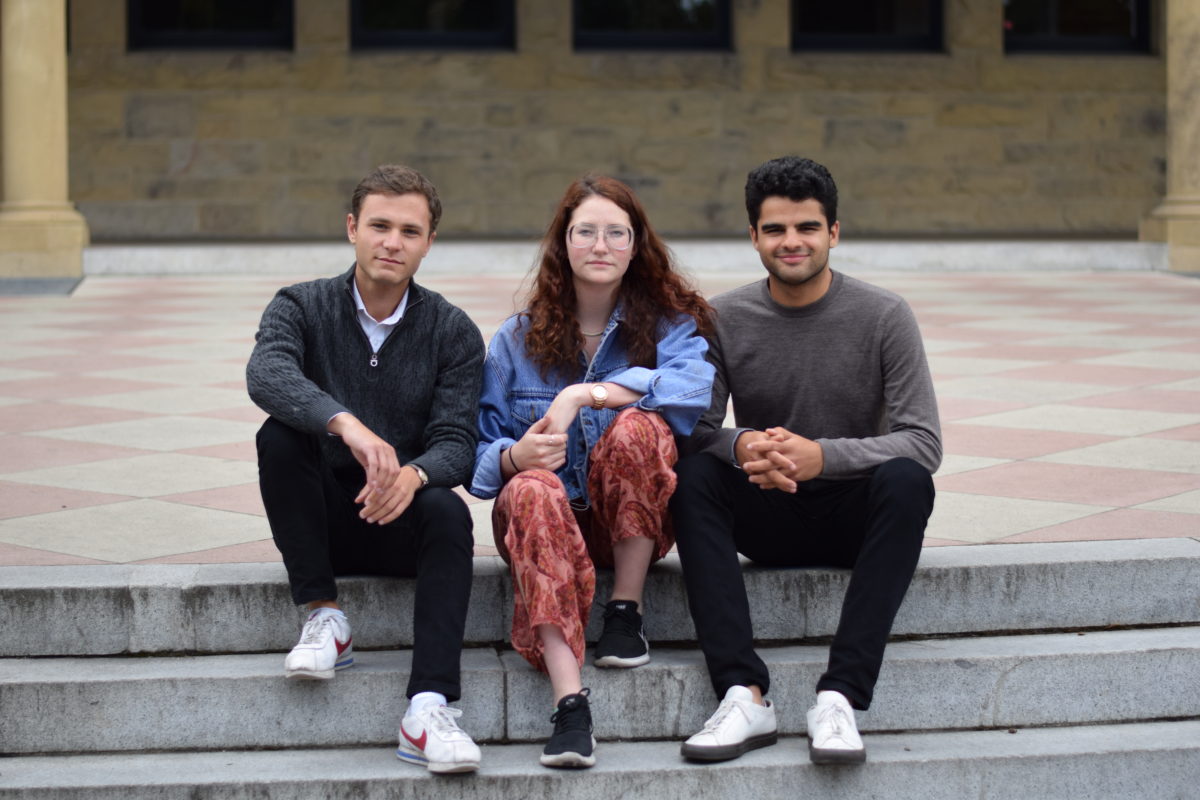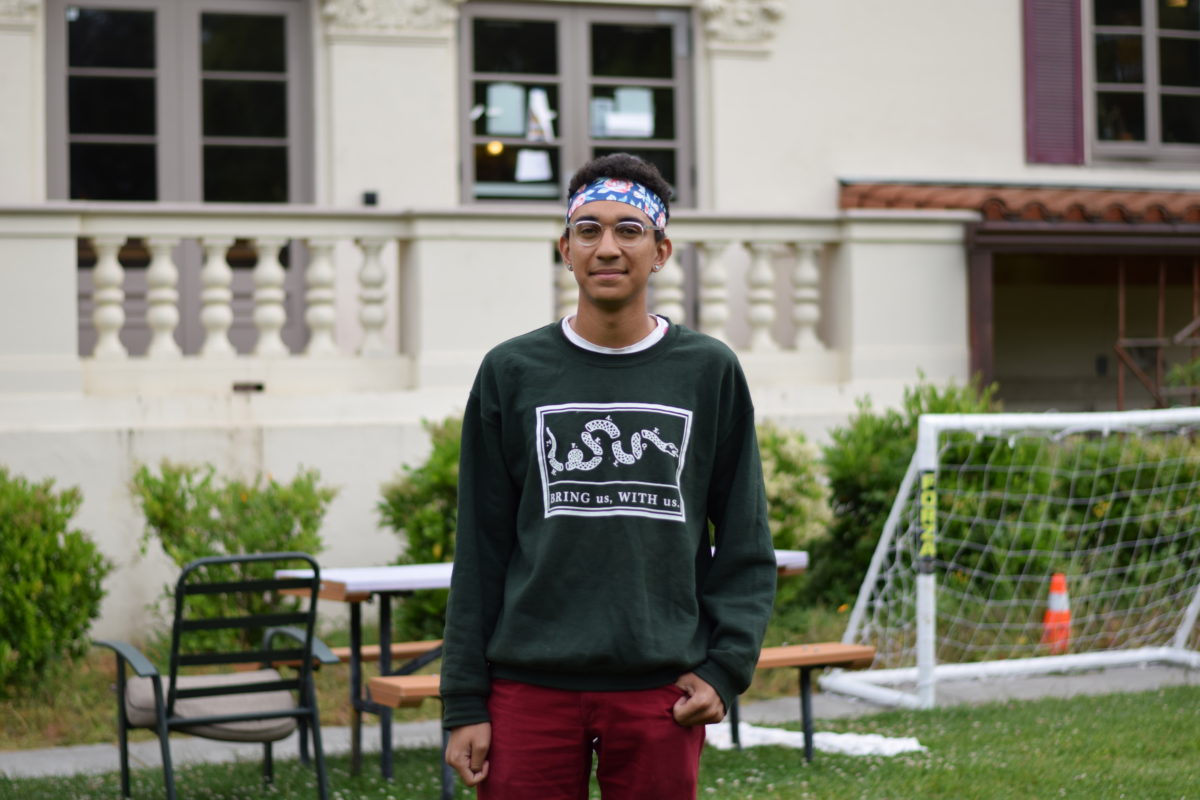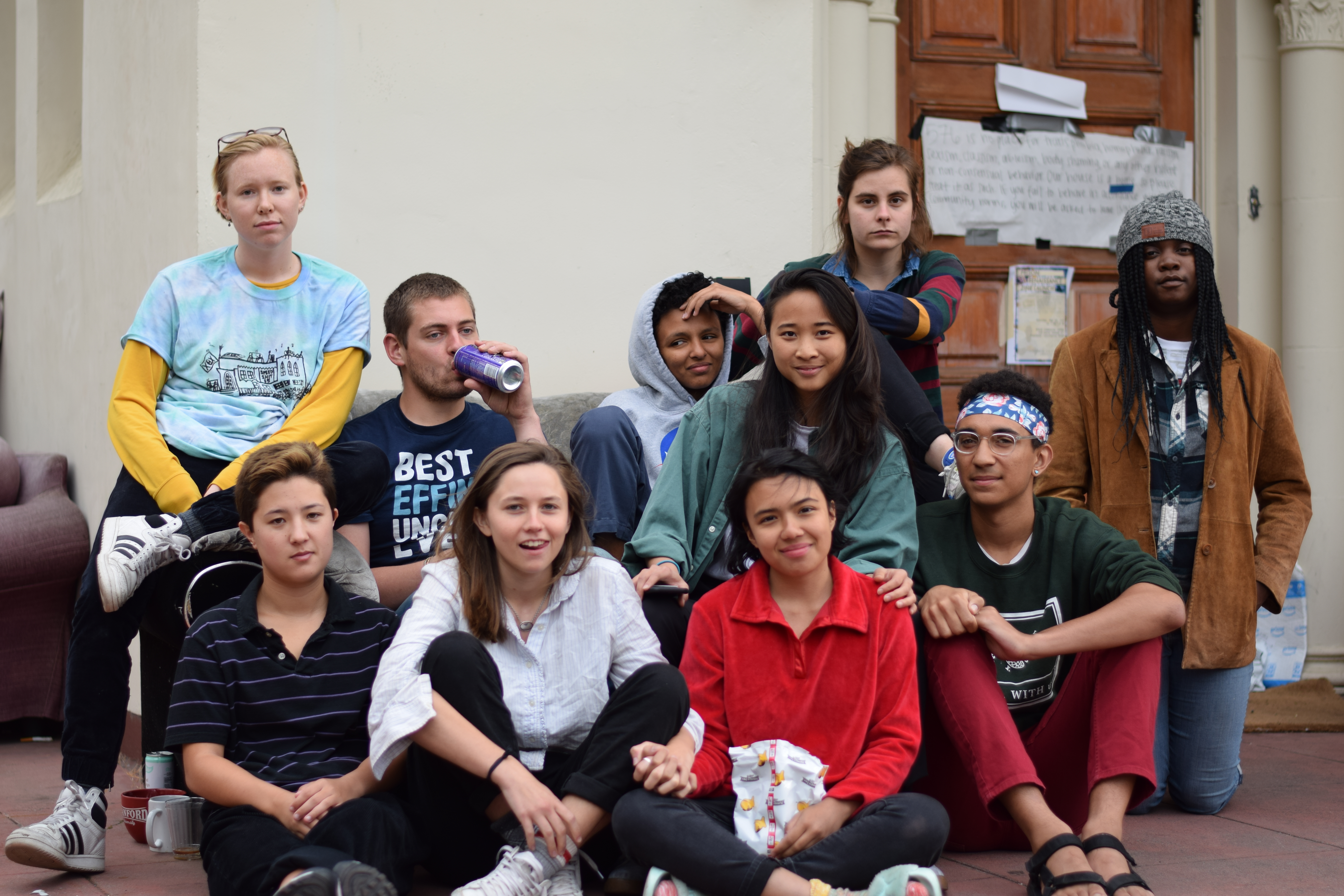The student identified as “Basil” has been given a first-name pseudonym, since they requested anonymity for privacy reasons. Additionally, the student identified as “John” asked that his last name be kept anonymous for privacy reasons.
“There are few spaces for cis gay/bi men on campus. We party here.”
That was the original title of an event, later canceled, that was scheduled to take place on March 15. Following the Facebook event’s initial publication, there was immediate pushback from some members and allies of the queer community.
One senior, who was granted anonymity due to privacy concerns, wrote a widely-shared Facebook post that criticized the event’s use of the term “cis” as “completely unacceptable [and] inherently transphobic,” continuing that it “should be called out immediately.”
The organizers would eventually remove the word “cis” from the event announcement, writing an apology on the event page that expressed their intent “to create a fun environment designed around male-identifying queer folk” and clarified that they would “welcome others who would contribute positively to that environment.” But the criticism continued.
“No amount of apologizing for excluding trans people from a space will ever make this event’s original intent okay,” the same Facebook post read. “I understand that being gay/bi still places [cis white gay men] in a relatively marginalized position compared to heterosexual folks … However, gay/bi people CAN STILL OPPRESS OTHER FOLKS, ESPECIALLY IF [their] IDENTITIES INTERTWINE WITH MALENESS AND WHITENESS.”
Following the circulation of this post, the organizers agreed to meet face-to-face with individuals who had concerns about the event and, at the request of their critics, eventually agreed to cancel it. Among the people who met with the organizers was Darian Rice ’19, who explicitly requested that the event be canceled due to its exclusion of nonbinary and trans members of the queer community.
The organizers, according to Rice, explained to him during the in-person meeting that they did not feel as if there was a space for cis gay men on campus, so the idea was to intentionally create that space.
Rice also felt that the party, based on the Facebook invite list, predominantly catered to white individuals.
“The idea that spaces are not designed specifically for cis gay white men is kind of laughable,” Rice said. “To me [as a person of color] that seems to be the case already.”
Although many members of the queer community voiced strong opinions against it, the party, if it had occurred, would have created a space that many feel is lacking on Stanford’s campus.
“I was a little disappointed, maybe selfishly, because I haven’t really found a place on campus where I can meet other gay guys,” Lucas Whitaker ’21 said. “I don’t really have that space on campus. So I got really excited.”
According to Andrew Blum ’20, it’s precisely this space that the party attempted to fill. While excluding some members of the community, it sought to create a specific and intentional space for others and provide to them what Stanford is currently lacking, he said. He pointed out that the cancellation of the party only exacerbated the absence of social opportunities for LGBTQ-identified Stanford students.
“Rather than building off of [the party] and being like, ‘Well, maybe we should also create something for gay women,’ [the response] was, ‘Well, now we’re just gonna have no gay parties again,’” Blum said. “Which I felt just amplified this problematic lack of anything gay on campus.”
In light of the divergent opinions of the event, it appears that this party intentionally included specific members of the broader queer community and excluded others, indicating the presence of divisions within the queer community along the lines of race, gender, socioeconomic factors and even dorm community.
Chloe Levin ’21 went so far as to state that she does not feel as if there is any “centralized, or even decentralized, gay community.”

Division among queer communities
Stanford’s LGBTQ+ community has a strong and visible presence in certain residences that have established queer-friendly reputations. Co-ops including Terra, which is informally recognized as the queer-themed house on campus, as well as Kairos and 576 Alvarado have a strong queer presence.
Certain fraternities, including Theta Delta Chi (TDX) and Phi Kappa Psi (Phi Psi), are also known for having more openly gay members. TDX member John* ’19 estimated that 20 percent of his pledge class is LGBTQ-identifying, and Shahpar Mirza ’19 said he felt comfortable enough to attend Phi Psi’s rush events during his transition from female to male — it felt like one of the only fraternities that would be safe enough for him, he remembered.
On the sorority side, Mirza, whose long-term girlfriend is a member of Delta Delta Delta (Tri Delt), said that it felt like the “queerest Greek life on campus.”
Levin, a member of Tri Delt, said that while the sorority does a “really great job of being accepting” toward its LGBTQ members, this inclusivity is not explicitly part of the organization’s mission.
“It’s a space where I feel safe — I know other gay women, I have great relationships with them and I’m so thankful for that,” she said. “And they’re the only gay women that I know, and that’s so sad because it’s not a gay space.”
Mirza doubted that Greek life, with the single-gender spaces it creates, can ever be truly inclusive of the transgender community.
“It just really reinforces the binary,” he said. “I think ultimately no fraternity or sorority that is exclusive to one gender is going to be inclusive of the trans community.”
“It’s going to be hard, even for a transgender man, to be in a fraternity, just because you are in such a masculine space,” Mirza continued. “For me, I’ve lived 18 years as a woman, and I have certain mannerisms that just are different than most men. It would have been a culture shock for me.”
Rice pointed out that there is a lack of communication among these different queer-inclusive communities, especially between those Greek and non-Greek organizations.
“Terra has its specific parties, but it doesn’t seem linked to other [communities],” Rice said.
Rice also mentioned that some co-ops’ mission statements emphasizing inclusion and condemning racism and transphobia can be hollow in practice, citing a lack of intentionality in addressing these issues on campus. Some co-ops have been criticized, for example, for being accepting and inclusive at face value while still being predominantly white.
“I’d like to see had more instances of [traditionally queer] houses very much intentionally coming together and expressly stating, ‘Hey, we’re going to come together [to] create this community where we’d actually live out practices of not being homophobic or transphobic or racist,’” Rice said.
Some disagree, though, and feel co-ops serve as diverse, inclusive communities. For Basil ’21, Terra is an incredibly important and inclusive space.
“We have a broad range of identities in the house, covering basically every letter of the alphabet soup that is LGBTQ+ and a good proportion of [queer people of color],” Basil wrote in an email to The Daily. “Terra has been especially instrumental to me for finding trans community and support — I can’t stress enough how wonderful it is to walk into a room and realize, ‘Hey, everyone here is trans.’”
Connor Toups ’22 also mentioned that there are further divisions between Greek queer social life and co-op queer social life, pointing out that co-ops tend to be more outwardly inclusive of a broad spectrum of sexuality, gender and racial identities.
“The stereotype is like, ‘Oh if you’re more queer, perhaps more fluid, you would join a co-op,” Toups said. He also mentioned that there are racial dynamics at play within the Greek community, as it tends to skew white.
A sophomore who is a member of Greek life, and who requested anonymity for privacy reasons, echoed this idea, saying that LGBTQ+ members of Greek life can seem to exist in a separate social circle from the rest of the queer community.
“It brings you closer with the other gay people in Greek life and kind of removes you a little bit from the other gay people on campus, because Greek life itself is just a very exclusive environment,” he said.
Of course, there are many queer individuals who are not part of co-ops or Greek life, and who may be still actively seeking a stronger queer social community on campus. Indeed, students have criticized predominantly white, wealthy and cis spaces — like fraternities — for taking up space in the zeitgeist of queer social life, often to the detriment of the voices of marginalized and decentralized campus communities — namely those of queer people of color, non-cis students and first-generation, low-income (FLI) students. These students are often given less of a voice in Stanford’s queer community at large due to their lack of affiliation with one of the pre-existing, publicized queer organizations. Iain Espey’s ’18 controversial Daily article, “Strange queer, queer strangers,” shed light onto this issue as well as the larger issue of labeling within the queer community.
Whitaker cited Espey’s article, in which Espey expressed his own disconnectedness from the various categories of queer people that he saw in Stanford’s social scene.
“[Espey] talked about how he feels like he doesn’t really belong in any of the two leading gay male groups on campus, one being the very political — what he called Terra-gays, maybe problematic, but that’s what he called them — and then the frat gays,” Whitaker explained. “[Espey is] kind of in the middle, and I think [Levin, Blum and I] feel similarly.”
Espey specifically felt that being able to fit one of the gay molds was vital to someone’s queer experience at Stanford, with some people being able to enjoy certain queer spaces while others were left out.
“There are a limited number of gay circles and explicitly gay spaces, and if you don’t fit the mold — any of the molds — there isn’t space for you,” Espey wrote. “In that case, you meet your queer peers piecemeal, or you don’t meet them at all. You sleepwalk through your undergrad years searching for a gay community, knowing full well where and what it is and wanting no part of it and wondering why you can’t just be happy with your Grindr feed and your anonymity.”
This desire to categorize, however, can sometimes originate from a deeper desire to have a specific label or identity.
“I think that’s a uniquely gay struggle,” Levin said. “I did not know how I defined myself for a really long time, [and] I really struggled with that.”

The challenge of inherent diversity
The queer community has always struggled with cohesion; there is a deeply embedded historic divide between gay men and lesbians. The queer community is a population of individuals with many sexual orientations and gender identities as well as many racial and socioeconomic backgrounds. The queer identity itself is constantly evolving and in a perpetual inflection point.
A simple search for the different variations of the LGBTQ+ acronym demonstrates the extreme challenges the queer community faces when it comes to intersectionality. There has also been a recent controversy regarding the colors included in the rainbow pride flag, with some arguing black and brown should be included to demonstrate the racial diversity of the community.
“The group is so diverse and people are [at] different stages of identity formation,” Xavier Fields ’19 said. “They have different wants and needs from a community and there’s no way to encapsulate everyone who identifies as LGBTQ+ in one community.”
In addition to the community’s diversity, there are also significant power imbalances among its members. Toups noted that much of the recent progress for LGBTQ+ people has primarily benefited white cis gay men. This does not mean white cis gay men do not face discrimination — they most certainly do. However, cis gay men, especially white cis gay men, are capable of discriminating against other, more oppressed members of the queer community.
“The fruits of the liberation equality movement [have] advanced significantly over the past 10 years, [but] a lot of that has maybe gone to one, a certain group; it’s just [dis]proportionately favored masc-presenting gay men [and] white gay men,” Toups said.
The aforementioned Facebook post echoed this idea. “Gay/bi men have taken a dominant position within the community, flinging other queer folks to the margins of our own marginalized community,” the post read.
Some believe cis gay men have enjoyed a greater degree of progress than non-cis and female members of the queer community.
“At the end of the day, cis gay men are still men,” Madeleine Rowell, an undergraduate and a vocal critic of the canceled party, wrote in an email to The Daily. “And so to some extent they have a vested interest in maintaining the status quo/patriarchy.”
Female, nonbinary and non-white members of the queer community may receive less attention in the broader queer community than their male, cis and white counterparts, leading members of these communities to feel isolated.
“There are just no spaces for lesbians or bisexual women or pan [women],” Levin explained. “For gay guys, there are a lot of problems with the existing platforms, but just for women, there are [no platforms].”
There are also few communities for queer people of color (QPOCs). Rice described his experience navigating the intersection of his queerness and life as a person of color as “isolating.”
“I haven’t felt like there have been parties that specifically cater to [QPOCs],” Rice said.
Rice mentioned that the organization Black and Queer at Stanford (BlaQs) had attempted to mitigate this feeling of isolation by bringing QPOCs together, but the organization has become somewhat inactive overtime.
Basil acknowledged that, although Terra serves as a strong queer community, the broader queer community at Stanford, especially for those who are not gay men, is scattered.
“I do think that the queer community outside the house is kinda tenuous, and as a frosh I had little contact with the broader queer community which was unfortunate,” Basil said. “As a frosh I did notice that the gay men across campus had more of a social network than trans and [women-loving women], but that was mostly a function of Grindr.”
Basil did acknowledge, however, that there may be more QPOC and trans-specific campus events, while there may not be similar events focused on gay men.
“There are QPOC events and trans events, not because those groups are ‘more valued’ than other groups, but because these are the segments of the queer community that are still at the highest risk for discrimination and violence,” Basil explained.
Troubled attempts at cohesion
While inclusive places like QSR, Black and Queer at Stanford (BlaQs), Sharing Our Stories About Sexuality (SOSAS) and Q-Spot or the Firetruck House exist on campus, some feel they haven’t been able to merge the fractured parts of the gay social scene.
“I think there’s also not any social gay place,” Blum explained. “You have the Firetruck House and stuff, but those are all very structured and almost academic focused, and aren’t really there for socialization or just to meet other people.”
Levin spoke to the lack of community fostered in queer-specific locations on campus. “I know that QSR exists, but I went to one meeting, felt really weird about it, and never talked to anyone again. I also did a SOSAS panel training. I did the thing and then I just never sat on any panel.”
Fields said he has found his place in the community outside of the University-designated spaces for queer individuals.
“For me it’s come in two large communities: my house, 576, and student groups. I’ve been part of band and that is an organization that has a lot of LGBT people in it,” Fields said. “So you meet people through other means and then you create little subsections of community through that other shared connection you have.”

Is cohesion necessary?
This discussion, however, fails to answer a central question: Is the cohesion of the diverse queer community necessary? Although the queer community shares many political interests, and inclusion and equality of everyone within the community should be a priority, it may not be necessary for the queer community to have a cohesive social scene.
“On the large scale, the gay community is a myth. When not mobilized toward political action or courted by corporations showing off their progressive values and thereby targeting us as customers, what connection really exists between us manifold queers across the country?” Espey wrote in his previously mentioned Daily article. “We may have some stock of shared experiences and societal interests, but I have the same sort of overlap with other individuals. It’s just that ‘gay’ is a recognized identity group in a way that ‘morbidly brooding young man’ never will be.”
Although queer individuals share some similar experiences, it may be unfair to deem it necessary that the queer community become a monolith. Jared Hysinger ’21 mentioned that one aspect of the Stanford queer community he actually appreciates is the fact that it feels integrated into the rest of the student body, rather than a separate community.
“I think that it’s actually really powerful to have such a wide array of LGBTQ+ people across campus, because it serves [to] integrate [gay people] more into the campus community,” Hysinger said.
The intersectionality inherent in a community based on fluid identity components such as sexuality and gender makes it challenging to formulate a concrete group, even if it might be beneficial. There are such distinct and different experiences that each person in the queer community has, making division feel all but inherent.
“The transgender experience is so much different than like the gay male experience or the lesbian experience,” Hysinger said. “I think that in general, because those experiences are different, sometimes it can be hard to relate even within the LGBT community which is really unfortunate.”
Fields, however, mentioned that differences of experience, no matter how extreme, can be overcome.
“A lot of times [different] identities overlap where people belong to multiple communities or identify as different things, and that is good for creating events and mixers and things where people can get to know each other who have similar backgrounds and similar experiences and create that sort of bonding,” Fields said. “There are a lot of people who get to know each other over these differences.”
Toups, however, questioned the legitimacy of scrutinizing the cohesion of an already marginalized community at all. Toups, who writes for The Daily, criticized The Daily and this article directly, explaining that writing an article that pries at “the divisions of a community that already faces marginalization on campus” may be markedly unfair.
“The Daily devoting a whole [magazine] article to LGBTQ social fracturing and exclusion but not doing the same thing with straight people might just be a bit [of a double standard],” Toups said, noting the fact that this party has received more attention than most other parties on campus, despite the problematic themes and circumstances sometimes surrounding other non-queer-oriented events.
Moving forward, Rice believes that there is potential to at least talk about creating more inclusive, cohesive spaces for the queer community. Rice mentioned that currently there does seem to be tension among the different facets of the gay community that should be addressed.
“It doesn’t even have to be a party — maybe just a space to talk about these issues,” Rice said. “I know there’s definitely tension and there was tension during the meeting when I was speaking with [the party organizers]. There’s just seems to be like this sort of cognitive dissonance between what constitutes [an] inclusive party and what needs to happen in terms of next steps for the queer community on campus.”
Contact Claire Dinshaw at cdinshaw ‘at’ stanford.edu and Zora Ilunga-Reed at zora814 ‘at’ stanford.edu.
*We as writers understand that the queer community is incredibly diverse. Therefore, there are some perspectives that may not be included in this article. For that, we apologize. We encourage people who have a different perspective on this issue to reach out to the Daily. We accept and publish Letters to the Editor as well as unsolicited opinion pieces.
